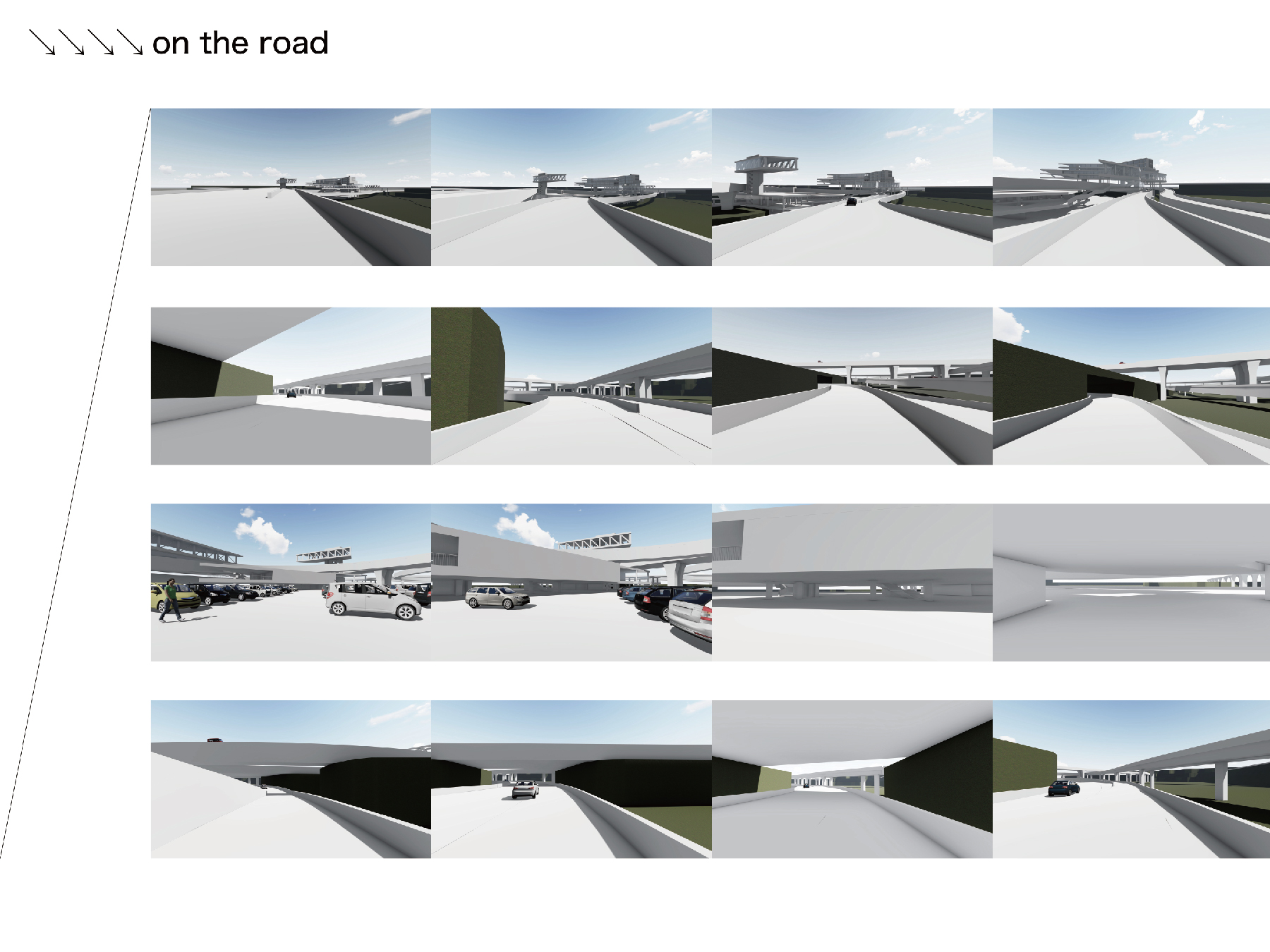
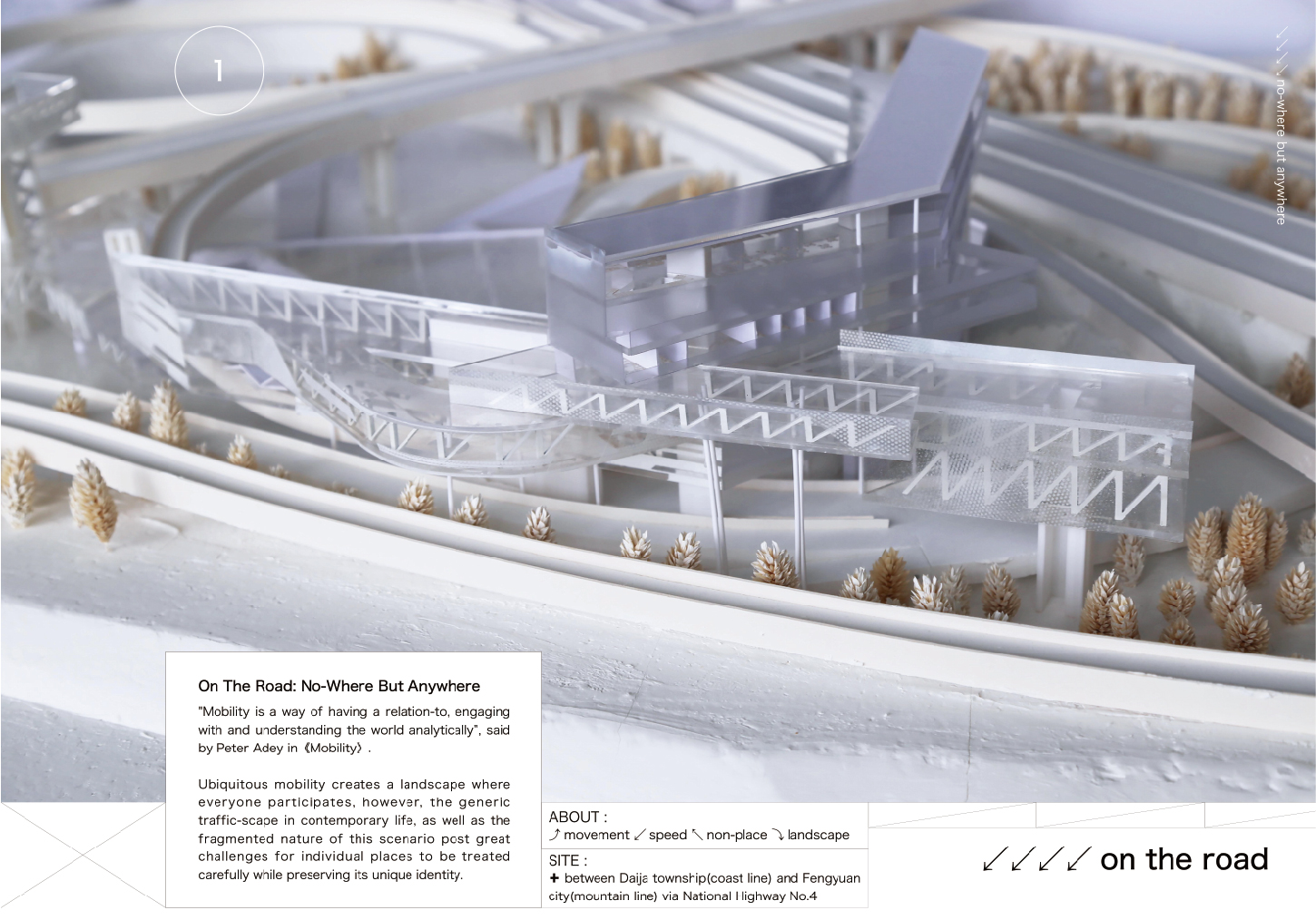
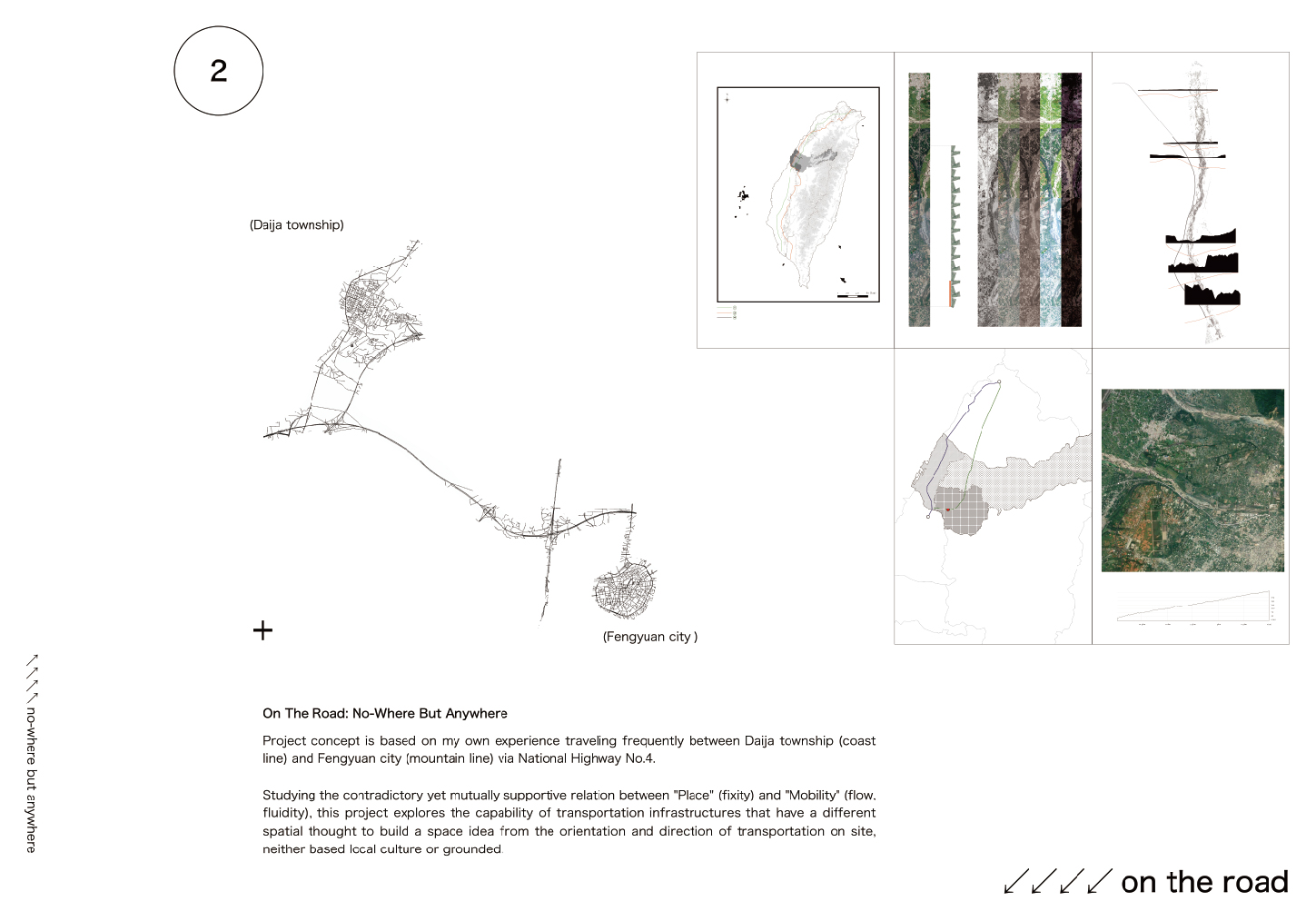
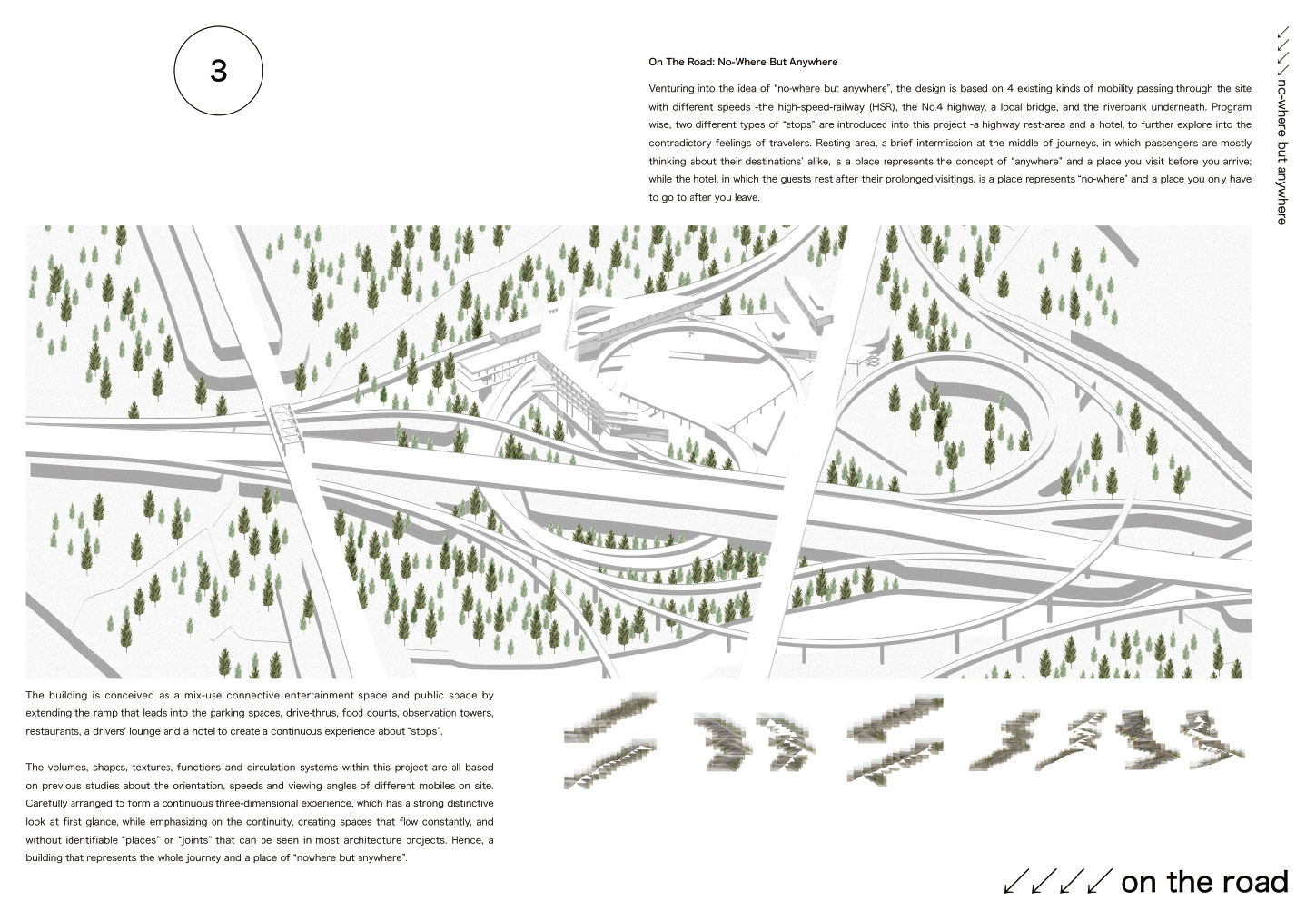
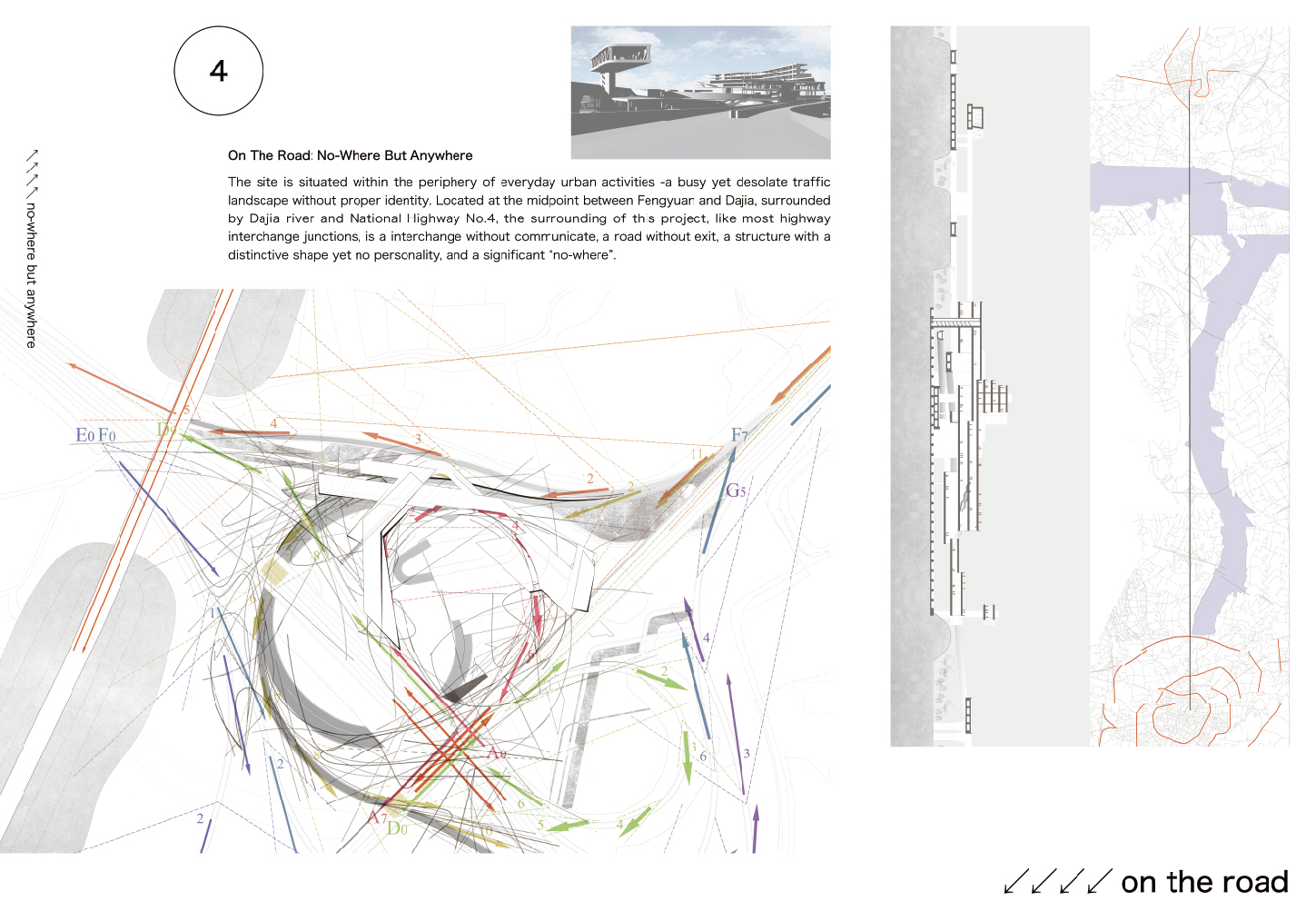
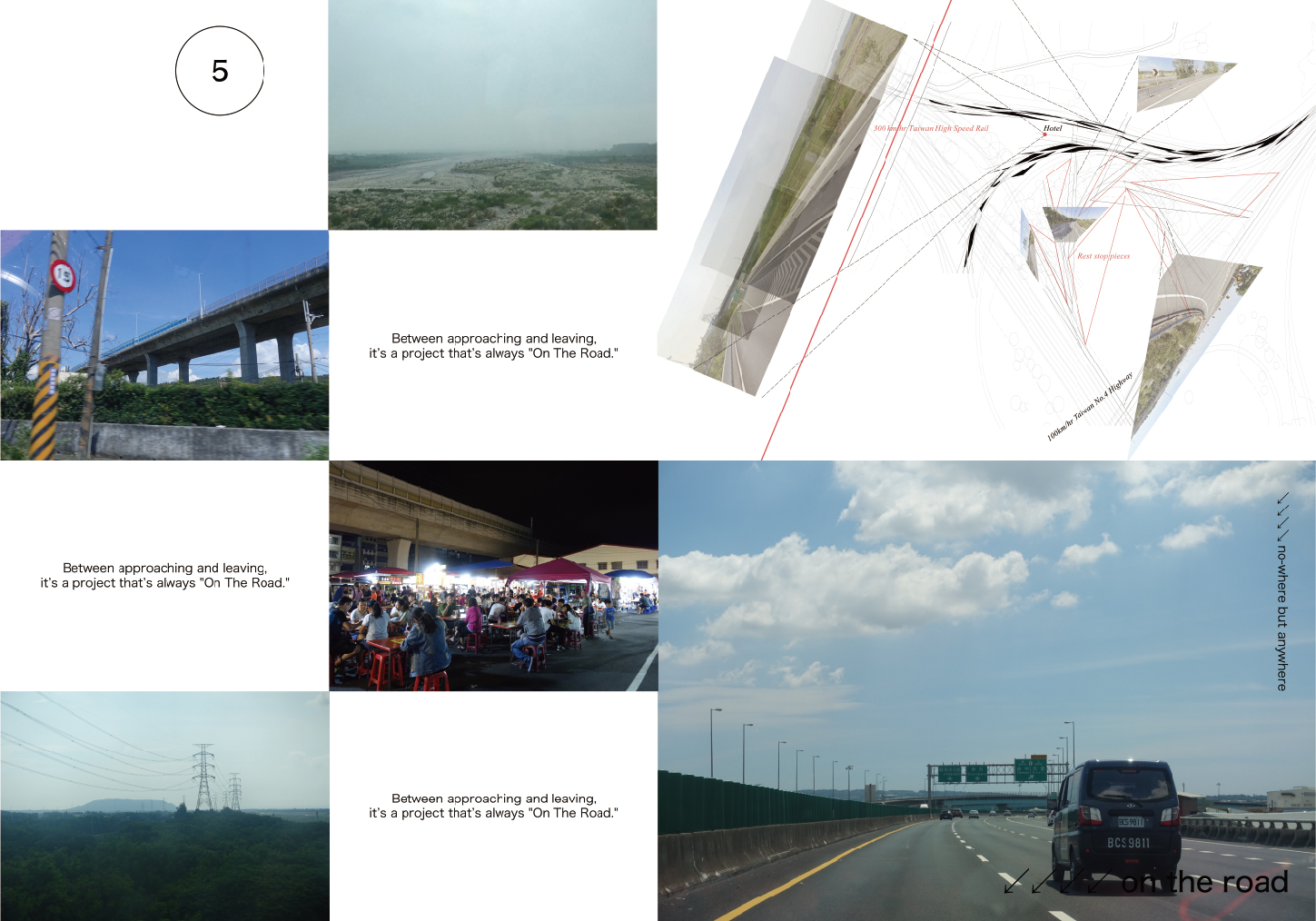







On The Road: No-Where But Anywhere
台灣 / taiwan
陳怡蓁 / CHEN, Yi-Chen
在路上:不在地方但任何地方
當「地方」致力於強調個別的差異性,「在路上」卻是一種曖昧、不確定的但是在更大的世界網絡之中,經常 「獨自一人卻與他人相似」的狀況。
基地在豐原、大甲的中間,大甲溪與國道四號夾擠的邊陲,缺乏定義的交通空地,四邊均為快速交通的基礎 設施(高鐵、國道、大橋、河堤)。「在路上」的設計,創造了兩種意義相關但速度不同的停留:休息站與旅館, 以整體配置和空間立體安排,建構一種當代快速移動所詮釋 「『非地⽅』的地⽅感」。
Studying the contradictory yet mutually supportive relation between “Place” (fixity) and “Mobility” (flow, fluidity), this project explores the capability of transportation infrastructures that have a different spatial thought to build a space idea from the orientation and direction of transportation on site, neither based local culture or grounded.
The building is conceived as a mix-use connective entertainment space and public space by extending the ramp that leads into the parking spaces, drive-thrus, food courts, observation towers, restaurants, a drivers’ lounge and a hotel to create a continuous experience about “stops”.
More Projects of this Session
展區其他作品
在路上:不在地方但任何地方
「移動性是一種跟世界產生關聯、參與,並在分析上理解世界的方式。」
《移動》,彼得.艾迪
在當代,大量移動成就共同參與的風景,卻在均值且片段的狀況內,不易細緻而獨特地對待。
出發,以自身往返大甲、豐原兩地的經驗,研究「地方」與「移動」之間的矛盾。國道交通這種支持性連結設施 ,一邊以超級水平連結兩地的人,一邊以橋墩、支柱等垂直基礎,形成城市邊界的縱向切片。
基地在豐原和大甲的中間,也是大甲溪與國道四號夾擠的邊陲,缺乏定義的交通空地,四邊均為快速交通的 基礎設施切割(高鐵、國道、大橋、河堤)。「在路上」的設計,創造了兩種意義相關但速度不同的停留狀況:休 息站與旅館。
休息站,一種對於遠方目的的期待,空間上的中間點;旅館,一種抵達以後,反過來準備離開的情境,時間上 的縱切片。將原先由交通圈圍的無用地帶,從交流道高度最低、速度最慢的匝道,延伸出空間漸層變化,垂 直層次交織的停車場、車道、得來速、美食街、觀景塔、駕駛休息室、旅館大廳、餐廳、高層客房、瞭望平台。
整體配置對應基地上不同速度的安排,內部創造立體連續變化空間經驗,建構一種當代速度與移動所構成, 不屬於任何特定地點「非地方」場所感。
On The Road: No-Where But Anywhere
“Mobility is a way of having a relation-to, engaging with and understanding the world analytically”, said by Peter Adey in《Mobility》.
Ubiquitous mobility creates a landscape where everyone participates, however, the generic traffic-scape in contemporary life, as well as the fragmented nature of this scenario post great challenges for individual places to be treated carefully while preserving its unique identity.
Studying the contradictory yet mutually supportive relation between “Place” (fixity) and “Mobility” (flow, fluidity), this project explores the capability of transportation infrastructures that have a different spatial thought to build a space idea from the orientation and direction of transportation on site, neither based local culture or grounded.
The site is situated within the periphery of everyday urban activities -a busy yet desolate traffic landscape without proper identity. Like most highway interchange junctions, is an interchange without communicate, a road without exit, a structure with a distinctive shape yet no personality, and a significant “no-where”.
The building is conceived as a mix-use connective entertainment space and public space by extending the ramp that leads into the parking spaces, drive-thrus, food courts, observation towers, restaurants, a drivers’ lounge and a hotel to create a continuous experience about “stops”.
The volumes, shapes, textures, functions and circulation systems within this project are all based on previous studies about the orientation, speeds and viewing angles of different mobiles on site. Carefully arranged to form a continuous three-dimensional experience, which has a strong distinctive look at first glance, while emphasizing on the continuity, creating spaces that flow constantly, and without identifiable “places” or “joints” that can be seen in most architecture projects. Hence, a building that represents the whole journey and a place of “nowhere